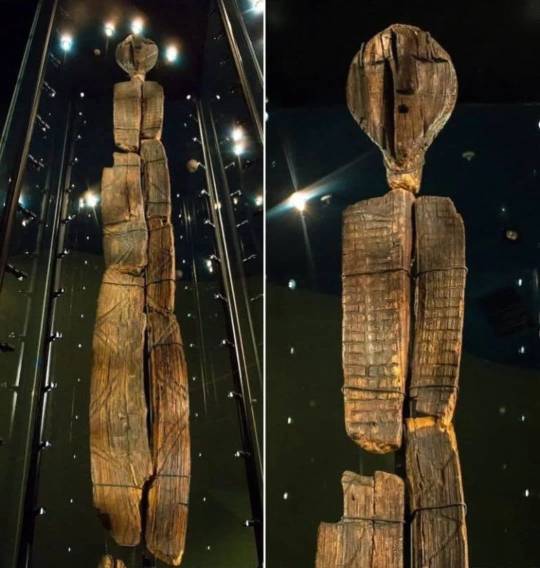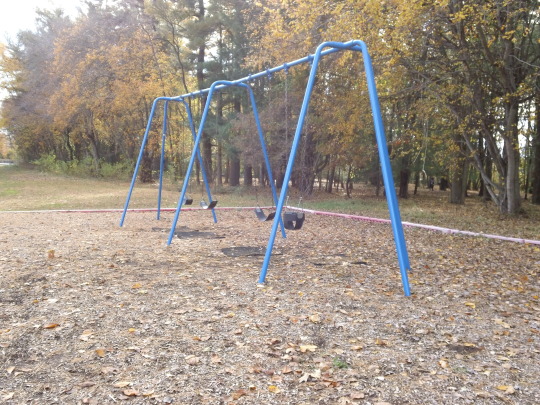#wooden poles
Explore tagged Tumblr posts
Text

Darian and Tem sparring, which was requested by DJBlueWolf in this month's Patreon suggestion box! :3
#Darian#Tem#wolf#dog#canine#mustelid#otter#anthro#anthropomorphic#furry#action pose#wooden poles#wooden sticks#digital art#my art#Patreon#suggestion box#request#kilt#tunic#shirt#perspective#sparring
222 notes
·
View notes
Text

A wooden pole with white paint from the top to around the middle.
#pole#poles#wooden pole#wooden poles#something outside#wood#wooden#white paint#photography#photo#photos#picture#pictures#image#images#a photo#a picture#an image#photograph#photographs#a photograph
1 note
·
View note
Text
Finished another :)

#are the power line cords messed up? absolutely. we're not worrying about it.#maybe it's just a really windy day.#I also think the second smaller wooden pole doesn't translate as well but alas.#I used a photo I took as a reference and there was just a random wooden beam in the ground. as there are.#and I added it even though I think it's a little pointless.#I'm really not a stickler for composition tbh. does it interrupt visual flow? maybe but I do not care.#taylor's tag#i need to post about pokeani again to make up for the art posts lkfjdhkjgdfh.#remember when this blog stayed on topic lmao?
43 notes
·
View notes
Text

Had to go on an exhausting road trip this weekend and this book was the highlight of the entire experience. 😅 I’m so glad I decided to bring it with me at the last moment.
#our car got a puncture in the middle of the highway at night in the rain#the tyre repair place was literally a tarpaulin sheet held up by wooden poles#it was not quick and there was a creepy drunk guy and that’s all anyone needs to know#we travelled 9 hours straight in either direction 5/6 people deep#it was an odyssey lol#the neverending story#michael ende#book photography#book blog#bookblr#booklr#booknook#books#catblr#reading#currently reading#cats of tumblr
14 notes
·
View notes
Text


#Photography#Nov. 2018#Outdoors#Close-Up#Distance#Preserved Farmland#Private Land#Artwork#Barn#Roads#Painted Lines#Telephone Poles#Telephone Wires#Sky#Dried Grass#Field#Gravel#Curb#Wooden Signs#Wooden Fence#Silhouettes#Buidlings#Vehicles#Pine Trees#Woods#Branches#Sunlight#Nature#Pavement#Concerete
3 notes
·
View notes
Text
so. was no one going to tell me about solo journaling rpgs or was i just supposed to find that out by accident??
if anyone else hasn't heard of them, i've been doing (playing?) one over the past couple of days and it's so fucking cute i am having the time of my life. the one i found is called Of Moon and Leaf and the whole thing is just you writing the journal of a lone forest-dwelling person just exploring a magical forest and mixing your potions and spells and dream magic this is the cutest thing ever. all you need is a notebook, pen/pencil, and a regular 6 sided die. go steal one from a board game if you don't have a dice set.
and i saw another one that's from the pov of an ancient vampire (idk the whole backstory, but my vampire loving ass is getting geared up for that one next) if anyone has any more of these that you've enjoyed, i would love to check em out
#i plan to leave a comment on their page when im through with this journal but i wanted to tell other people about it now lol#the Bad Thoughts™ have been raging again lately and this cute little game is the only thing thats kinda keeping them back#like one of those wooden beams that keep leaning telephone poles from completely falling over#a bitch is leaning but there sure is a big stick there so its fine i guess#not skyrim#rpgs#solo journaling game#of moon and leaf
111 notes
·
View notes
Text
Please tell me I'm not the only one who promised themselves that when they got a Jay minifigure that they would put him on one wooden posts they used to burn witches on but made out of lego and put fake fire under him
#roselockrants#i also promised to deepfry Wu for some reason#Yeah so anyway there's a minifigure tapped to a lego wooden pole circled by other minifigures and Harumi with her mask on#I think. I may be weird
20 notes
·
View notes
Text

The Shigir Idol, discovered in the peat bog of Shigir on the eastern slope of the Middle Urals, near the village of Kalata, is the oldest known wooden sculpture in the world. It was carved during the Mesolithic period, shortly after the end of the last Ice Age, making it twice as old as Egypt's Great Pyramid. The wood it was carved from is approximately 12,000 years old.
The sculpture was discovered on January 24, 1890, at a depth of 4 meters. It was extracted in ten parts and reconstituted to a height of 2.8 meters. Some researchers suggest that the original height of the statue was 5.3 meters. Unfortunately, some of these fragments were lost, so only drawings of them remain.
The initial radiocarbon dating gave an age of around 9,500 years. However, a later German analysis gave an age of 11,500 years, making it the most ancient wooden sculpture of its kind known in the world. In 2021, researchers published the results of a series of recent AMS-results dating the Idol close to the beginning of the Holocene (c. 10,000 cal BC) or about 12,000 years before present.
The Shigir Idol is a nine-foot-tall totem pole composed of ten wooden fragments carved with expressive faces, eyes, and limbs and decorated with geometric patterns. It represents the oldest known surviving work of wooden ritual art in the world. More than a century after its discovery, archaeologists continue to uncover surprises about this astonishing artifact. It is displayed in the Sverdlovsk Regional Museum of Local Lore in Yekaterinburg, Russia.
- Source: Pagan Trader ThePaganTrader.com
#The Shigir Idol#peat bog of Shigir#the Middle Urals#Kalata#wooden sculpture#ancient ways#sacred ways#Ancestors Alive!#Memory & Spirit of Place#Mesolithic period#totem pole#Sverdlovsk Regional Museum of Local Lore#Yekaterinburg#Russia#Pagan Trader#ThePaganTrader.com
11 notes
·
View notes
Video
Under the Bridge [IMG_1302] by Kesara Rathnayake Via Flickr: Colwood Waterfront, Vancouver Island BC.
#bridge#under bridge#under the bridge#wood#plank#planks#wooden#wood planks#wooden planks#poles#pattern#patterns#lines#straight lines#canon#50mm#nifty fifty#Vancouver Island#BC#British Columbia#Canada#Colwood Waterfront#Colwood#waterfront#mono#monochrome#Black & White#Black and White#B&W#foto
4 notes
·
View notes
Text

#telegraph pole#wooden sculpture#antique wood sculpture#antique#rusticdecor#original art#rustic sculpture#colorado#Colorado art#small artist#small business#lost creek studio#sculpture
2 notes
·
View notes
Text
Who Were The Tarim Basin Mummies? Even Scientists Were Surprised. The Enigmatic, Extremely Well-preserved Mummies Still Defy Explanation—and Draw Controversy.
— By Erin Blakemore | September 15, 2023

Hundreds of bodies have been excavated from cemeteries like this one around the Tarim Basin in Xinjiang, a region of Western China. Known as the Tarim Basin mummies, these people lived some 4,000 years ago—and their ancient DNA has yielded surprising insights. Photograph By Wenying LI, XinJiang Institute of Cultural Relics And Archaeology
Though they died thousands of years ago, hundreds of bodies excavated in East Asia’s Tarim Basin look remarkably alive. They retain the hairstyles, clothing, and accoutrements of a long-past culture—one that once seemed to suggest they were migrant Indo-Europeans who settled in what is now China thousands of years ago.
But the mummies’ seemingly perfect state of preservation wasn’t their only surprise. When modern DNA research revealed the preserved bodies were people indigenous to the Tarim Basin—yet genetically distinct from other nearby populations—the Tarim Basin mummies became even more enigmatic. Today, researchers still ask questions about their cultural practices, their daily lives, and their role in the spread of modern humanity across the globe.
How Were The Tarim Basin Mummies Found?
Buried in a variety of cemeteries around the basin as long as 4,000 years ago, the naturally mummified corpses were first unearthed by European explorers in the early 20th century. Over time, more and more of the Tarim bodies were unearthed, along with their spectacular cultural relics. To date, hundreds have been found. The earliest of the mummies are about 2,100 years old, while more recent mummies have been dated to about 500 B.C.

One of the most famous mummies found in the Tarim Basin is the Princess of Xiaohe, also known as the Beauty of Xiaohe. Named for the cemetery where her body was found, she is remarkably well-preserved even down to her eyelashes. Photograph By Wenying LI, XinJiang Institute of Cultural Relics And Archaeology
Who Really Were The Tarim Basin Mummies?
At first, the mummies’ Western-like attire and European-like appearance prompted hypotheses that they were the remains of an Indo-European group of migrant people with roots in Europe, perhaps related to Bronze-Age herders from Siberia or farmers in what is now Iran.
They had blond, brown, and red hair, large noses, and wore bright, sometimes elaborate clothing fashioned from wool, furs, or cowhide. Some wore pointed, witch-like hats and some of the clothing was made of felted or woven cloth, suggesting ties to Western European culture.
Still others wore plaid reminiscent of the Celts—perhaps most notably one of the mummies known as Chärchän Man, who stood over six feet tall, had red hair and a full beard, and was buried over a thousand years ago in a tartan skirt.
Another of the most famous of the bodies is that of the so-called “Princess” or “Beauty” of Xiaohe, a 3,800-year-old woman with light hair, high cheekbones, and long, still-preserved eyelashes who seems to be smiling in death. Though she wore a large felt hat and fine clothing and even jewelry in death, it is unclear what position she may have occupied in her society.
But the 2021 study of 13 of the mummies’ ancient DNA led to the current consensus that they belonged to an isolated group that lived throughout the now desert-like region during the Bronze Age, adopting their neighbors’ farming practices but remaining distinct in culture and genetics.
Scientists concluded that the mummies were descendants of Ancient North Eurasians, a relatively small group of ancient hunter-gatherers who migrated to Central Asia from West Asia and who have genetic links to modern Europeans and Native Americans.
How Were They Mummified?
These bodies were not mummified intentionally as part of any burial ritual. Rather, the dry, salty environment of the Tarim Basin—which contains the Taklimakan Desert, one of the world’s largest—allowed the bodies to decay slowly, and sometimes minimally. The extreme winter cold of the area is also thought to have helped along their preservation.
How Were They Buried?
Many bodies were interred in “boat-shaped wooden coffins covered with cattle hides and marked by timber poles or oars,” according to researchers. The discovery of the herb ephedra in the burial sites suggests it had either a medical or religious significance—but what that religion might have been, or why some burials involve concentric rings of wooden stakes, is still unclear.

Mummified corpses were first unearthed in the Tarim Basin by European explorers in the early 20th century. Their Western-like appearance and clothing originally led researchers to believe these ancient people were migrants from Europe—but DNA later debunked that theory. Photograph By Wenying LI, XinJiang Institute of Cultural Relics And Archaeology
What Did They Eat?
Masks, twigs, possibly phallic objects, and animal bones found at the mummies’ cemeteries provide a tantalizing view of their daily lives and rituals. Though most questions about their culture remain unanswered, the burials did point to their diets and the fact that they were farmers. The mummies were interred with barley, millet, and wheat, even necklaces featuring the oldest cheese ever found. This indicates that they not only farmed, but raised ruminant animals.
What Were Their Daily Lives Like?
The Tarim Basin dwellers were genetically distinct. But their practices, from burial to cheesemaking, and their clothing, which reflects techniques and artistry practiced in far-off places at the time, seem to show they mixed with, and learned from, other cultures, adopting their practices over time and incorporating them into a distinct civilization.
Researchers now believe their daily lives involved everything from farming ruminant animals to metalworking and basketmaking—helped along by the fact that the now-desolate desert of the Tarim Basin region was once much greener and had abundant freshwater.
Researchers also believe that the Tarim Basin residents traded and interacted with other people in what would eventually become a critical corridor on the Silk Road, linking East and West in the arid desert.
But archaeologists still have much to learn about what daily life was like for these ancient humans, including who they traded with, what religious beliefs they adopted, and whether their society was socially stratified.

Most of the bodies were found buried in boat-shaped coffins like this one, with the site typically marked by oars. This coffin is covered with a cattle hide, suggesting that the Tarim Basin people raised cattle and other ruminant animals. Photograph By Wenying LI, XinJiang Institute of Cultural Relics And Archaeology
Why Are The Tarim Basin Mummies Controversial?
The amazingly preserved mummies have long fascinated archaeologists. But the Tarim Basin mummies have also become political flashpoints. The Tarim Basin is located in the modern-day Xinjiang Uyghur Autonomous Region, land claimed by China’s Uyghur minority. Uyghur nationalists claim the mummies are their forbears, but the Chinese government refutes this and has been reluctant to allow scientists to study the mummies or look at their ancient DNA.
In 2011, China withdrew a group of the mummies from a traveling exhibition, claiming they were too fragile to transport. Some research about the mummies’ DNA has been criticized as downplaying the region’s distinctness in support of China’s attempts to assimilate Uyghur people. Just as more remains to be learned about the enigmatic mummies, their future as political and national symbols remains disputed too.
#History & Culture#Tarim Basin | Mummies#Scientists#Enigmatic | Extremely Well-Preserved Mummies | Defy Explanation#Draw Controversy#Xinjiang | China 🇨🇳#East Asia’s Tarim Basin#Western China 🇨🇳#Buried | 4000-Year-Old#Naturally Mummified Corpses | 20th Century | European Explorers#Mummies | Western-Like Attire | European-Like Appearance#Bronze-Age Herders | Siberia Russia 🇷🇺 | Farners in Iran 🇮🇷#Western European Culture#Celts#Chärchän Man#Princess | Beauty | Xiaohe#Central Asia | West Asia#Modern Europeans | Native Americans#Boat-Shaped Wooden Coffins | Covered | Cattle Hides | Marked | Timber Poles or Oars#Barley | Millet | Wheat 🌾 | Necklaces | Oldest Cheese 🧀#Silk Road | Linked | East and West | Arid Desert 🌵#Tarim Basin | Modern-Day Xinjiang | Uyghur Autonomous Region
16 notes
·
View notes
Text
I’m like if a chain link fence with large dandelions growing around it was a girl
#does that make sense#save me chain link fence with large dandelions#they speak to me on an emotional level#also old bent street signs with stickers on them#and wooden telephone poles covered in old staples and nails#liminal#liminal space
4 notes
·
View notes
Text
thinking about how solas is so fucking vulcan-coded
#you think his posture is that stiff naturally? that's a self discipline response right there babey#personal log#my theater teacher was really big on holding energy in your body#how when you're on stage your body should feel like a cat about to pounce#coiled and deliberate no matter the action#that's him your honor#side story: one unit was we literally just balanced wooden poles on our fingertips. it was like 2 months of this#and believe it or not. it helped my stage preserve enormously#*stage presence#also i can balance like any broom on my fingertip as a neat party truck so there's that#truck lol. *trick
4 notes
·
View notes
Text
When Father's planning on disposing of Ling, Ed says "you can't, he has people waiting for him" and when Ed is bleeding to death in a mine shaft he says "I can't let all those people cry over me". Something about the selfish desire for individual immortality versus the determination to survive for the people in your life.
#kat reads fma#*wooden overcoats voice* other people are all there is#if *I* were bleeding to death in a mineshaft#I would remind myself of all the politicians I want to outlive#*coughing up blood with a pole through my gut*#no... this can't be the end.... I have to watch Mitch McConnell bite it first
27 notes
·
View notes
Text

I GOT THE CITYSCAPE WALL!!!!!!! YIPPIEEEEEE

#i also managed to finally get the apparel shop to sell the white dog nose yesterday!!#this is so cozyyyyyy#now i just gotta bruteforce the recipes for the wooden partitions out of alli at the campsite lol#i got the tension pole rack out of her so far. which is a really nice furni item#typing furni as if im a habbo player... i wonder if other players of diff games also abbreviate furniture as furni#acnh posting
2 notes
·
View notes
![Under the Bridge [IMG_1302]](https://live.staticflickr.com/65535/53990613292_2e18ab3114_b.jpg)
